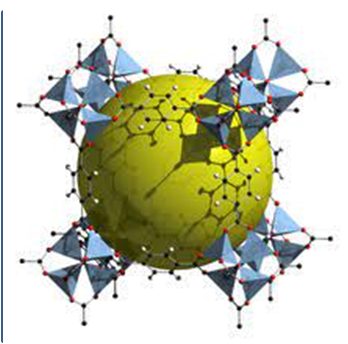CURRENT AFFAIRS
Get the most updated and recent current affair content on Padhaikaro.com
Zeolite oxygen concentrators/ Metal–organic frameworks (MOFs)
- Vaid's ICS, Lucknow
- 18, Oct 2021

About It :
- Metal–organic frameworks (MOFs) are a class of compounds consisting of metal ions or clusters coordinated to organic ligandsto form one-, two-, or three-dimensional structures.
- They are a subclass of coordination polymers, with the special feature that they are often porous.
- The main advantages offered by this class of compounds include their stability, large surface area, controlled pore sizes, and tunable chemical environments.
Applications:
Molecular sieve:
- Frameworks can be designed to act as sieves in separating out molecules of a specified size. This makes it viable for usage in a wide variety of applications including sensing.
Energy applications:
- They can also be used for both storing energy (as capacitors) and for conducting it (along membranes in fuel cells).
Catalysis:
- It can be used in catalysis, where they can replace very expensive metals as catalysts.
Medical field:
- It can be used in drug-delivery wherein anti-cancer and other drugs with severe side effects can be trapped in the porous confines of MOFs, to be released in small and steady doses.
Zeolites:
- Zeolites are highly porous, 3-D meshes of silica and alumina. They also occur naturally, where volcanic outflows have met water.
- One notable application of synthetic Zeolite is in oxygen concentrators.
- Zeolite based oxygen concentrators use synthetic frameworks of silica and alumina with nanometer-size pores that are rigid and inflexible. Being highly porous, zeolite beads have a surface area of about 500 square meters per gram.
FACTS FOR PRELIMS
996 culture:
- The 996 working hour system is a work schedule practiced by some companies in the People’s Republic of China.
- It derives its name from its requirement that employees work from 9:00 am to 9:00 pm, 6 days per week; i.e. 72 hours per week.
‘Net Minus’ paradigm:
- In the run up to the upcoming U.N. Climate Change Conference (COP26) in Glasgow, India has come under pressure, especially from the U.S. and U.K, to announce more ambitious emission cuts, beyond what came out of its Paris commitments and to provide a deadline by which it will reach ‘Net Zero’’ emissions.
- India’s line of argument has been that developing countries need space to grow and developed countries must move to a ‘Net Minus’ paradigm and meet climate finance obligations first.
- ‘Net Minus’ paradigm calls for Carbon Dioxide Removal (CDR). As it is the opposite of emissions, these practices or technologies are often described as achieving “negative emissions” or “sinks”.
- Indian Finance Minister who is on a U.S. visit has repeatedly raised or discussed the issue of climate finance obligations and technology transfer from the developed countries.
- Developed countries have committed under the Paris Agreement to allocate $100 billion per year from 2020 onwards to facilitate emission cuts in poorer countries and also to effect technology transfer.